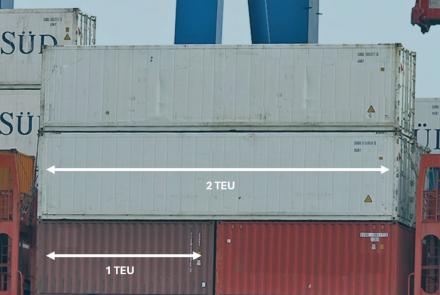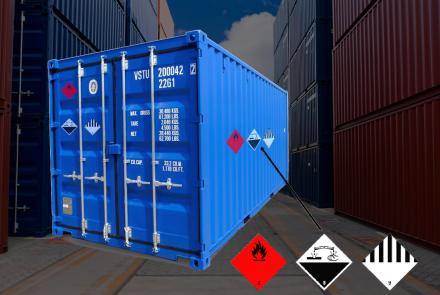Shipping Container Tracking System
![]()
In broad terms, a tracking system is a technique employed for monitoring objects or persons constantly on the move or in a static state, delivering a systematic and timely progression of the location for further processing and refinement.
A container tracking system, in its most fundamental role, indicates a container’s up-to-date location and provides its port details. To get this information, the user feeds in the container number/Bill of Lading in the tracking field of the website belonging to the concerned shipper. This is also known as the Standard Tracking System and it records the path of the cargo as it passes through certain locations such as ports.
Let us first explore the history of GPS Navigation Technology before coming to our main subject in detail. GPS Navigation Technology dates back to 1978 when the world’s first experimental Block-I GPS satellite was launched, followed by a series of 10 more similar satellites by the year 1985. It was not until 1994 when the last of the 24 satellites were put into orbit that the system became fully operational. GPS technology was available only to the military initially since it was primarily designed for their use.
As the public interest in having access to GPS technology grew, the US Government opened up this technology for the use of civilians too. This led to its popularity among individuals as well as logistics companies that managed a fleet of vehicles enabling their real-time tracking.
During its nascent stages of development, vehicles had to be equipped with a GPS device that was available by paying monthly subscription fees for using the satellite tracking system. Although such systems did have some advantages, their exorbitant fees and difficulties in smooth implementation meant that its use was limited to large companies. The spread of the internet and personal computers from the 1990s onwards led to the evolution of more advanced fleet management systems. By the mid-2000, the technology evolved into “tracking systems”, thanks largely to the evolution of Machine to Machine communication followed by the Internet of Things (IoT).
Ship container tracking and its importance
The shipping process, and particularly container movement is beset with many uncertainties. An unsuspecting shipper takes it for granted that containers once handed over to the shipping line will reach its destination safe and on time. However, the complexities with which the shipping lines operate do not guarantee a fool-proof process, and human errors often contribute to mishaps and delays. To illustrate an example, when a ship arrives at a port to unload containers, an unintentional human error could result in a wrong container getting offloaded. This may go unnoticed until after the ship has left the port resulting in delays stretching over several weeks before the container can be put back in another ship and transported to its right destination. Container tracking systems largely help to avoid such situations by allowing the parties concerned to locate their assets in real-time, and take prompt follow-up actions when a discrepancy is detected.
In modern times, efficient container tracking is not considered a luxury, but a prime necessity to balance the continuously improving standards of efficiency and professionalism in the trade and commerce space. The exact location of a container becomes available at the customer’s fingertips and allows easy exchange of communication between various stakeholders to ensure a smooth, safe and, timely delivery of the consignment.
The shipping container tracking process
The process behind an efficient container tracking system is simple and easy to grasp. The objective is to stay in touch with the ship monitored by remote satellite systems that pull up satellite images of a shipping container in real-time. These images are then relayed back to the base station.
What are the different types of Container Tracking Systems?
A vast majority of container tracking solutions employ GPS location transmitted through GSM or satellite. It works by picking signals from a tracking device attached to the exterior of the shipping containers. These tracking devices themselves come in two varieties:
* Magnetic Devices: These are mounted on the side of the container between the structural ribs. The gap between the ribs provides the necessary safety to the tracking device and protects it from external damage.
* Locking mechanisms: Locks that seal the doors of containers may be equipped with a tracking device.
An accelerometer acts as an electronic sensor to measure the acceleration forces acting on an object to determine its position and monitor its movement. It activates the tracking system and sends signals via GSM or satellite. The location data of the container is then transmitted to the application provider and relayed to the customer.
Chief benefits of GPS Tracking:
* GPS container tracking modules are available readymade, eliminating the need for special configuration. If cost is not a constraint and a user wants to install a tracking device quickly, this is the best option.
* Being self-contained, such devices do away with the need to install extra infrastructure. Hence its deployment becomes simple and trouble-free.
* They are extremely accurate with a precision of around 10 meters.
Some drawbacks with GPS Tracking systems:
* Even without counting the cost of hardware (tracking device), the monthly subscription rates range from US$7 to 30 per month.
* To deliver continuous and accurate results, the sky above the tracking device should remain clear. If the containers being GPS-tracked are stacked in between other containers, the signals could be lost.
* High power consumption is a negating factor. For a device to work continuously for six months on a single set of batteries, considerable care and, attention is required to arrive at a time-frame during which the device should be left in activation mode.
Short-range wireless container tracking:
Although GPS to satellite or GSM is the standard today in container tracking, there are other cost-effective alternatives like short-range wireless container tracking systems that do away with dependency on GSM or satellites. By placing a cellular transmitter on a few containers in a ship, a customer can track the position of numerous containers that are placed together by receiving data from these devices combined. This system also enables the use of “exception tracking” by installing a Bluetooth device on every container and setting up alerts if one or more containers from the rest are not loaded into a ship hours before its scheduled departure from a port. At US$1 per month per container, these systems are cost-beneficial but do encounter some complexities in their set up, hardware requirement, and installation. Apart from this drawback, GPS-based container tracking systems are self-contained.
How the future will unfold
The technology behind tracking systems is continuously evolving, and as evident today, the power of information has shifted from carriers to customers, who can now track all aspects of their cargo movement within the comfort of their homes. New technologies like Blockchain and the Internet of Things are revolutionizing the way in which service-providers and customers interact, co-exist, and build healthy relationships.
- Log in to post comments






